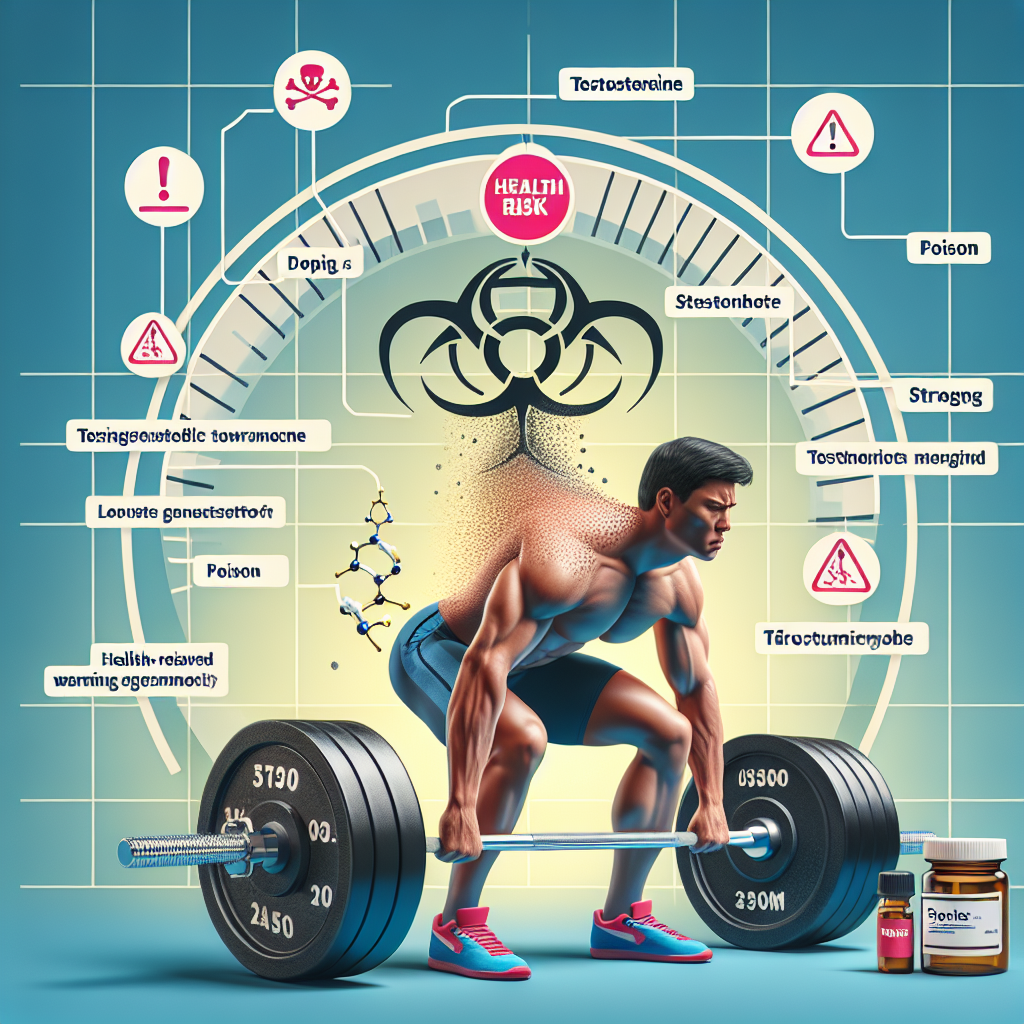-
Table of Contents
Testosterone and Sports Doping: A Risk Not to Underestimate
Testosterone is a naturally occurring hormone in the human body that plays a crucial role in the development and maintenance of male characteristics. It is also known to have anabolic effects, meaning it can increase muscle mass and strength. As a result, testosterone has become a popular performance-enhancing drug in the world of sports. However, the use of testosterone as a doping agent is not only unethical but also poses serious health risks that should not be underestimated.
The Use of Testosterone in Sports
The use of testosterone as a performance-enhancing drug in sports is not a new phenomenon. In fact, it has been used since the 1950s, when Soviet athletes were reported to have used testosterone to gain a competitive edge in the Olympics. Since then, the use of testosterone and other anabolic steroids has become widespread in various sports, including bodybuilding, cycling, and track and field.
One of the main reasons for the use of testosterone in sports is its ability to increase muscle mass and strength. This can give athletes an advantage over their competitors, allowing them to train harder and perform better. Testosterone is also known to improve endurance and reduce recovery time, making it an attractive drug for athletes looking to improve their performance.
The Risks of Testosterone Doping
While the use of testosterone may seem appealing to athletes, it comes with serious risks that should not be ignored. The most common side effects of testosterone use include acne, hair loss, and breast enlargement in men. However, the use of testosterone can also lead to more serious health problems, such as liver damage, heart disease, and even infertility.
Moreover, the use of testosterone in sports is not only unethical but also goes against the principles of fair play. Doping gives athletes an unfair advantage over their competitors, undermining the integrity of sports and the hard work of clean athletes. It also sets a dangerous precedent for young athletes who may feel pressured to use performance-enhancing drugs to succeed in their sport.
The Pharmacokinetics and Pharmacodynamics of Testosterone
In order to understand the risks of testosterone doping, it is important to understand its pharmacokinetics and pharmacodynamics. Testosterone is typically administered through injections, which allows it to bypass the liver and enter the bloodstream directly. From there, it is transported to various tissues, including muscle cells, where it binds to androgen receptors.
Once bound to the androgen receptors, testosterone can stimulate protein synthesis, leading to an increase in muscle mass and strength. It can also increase the production of red blood cells, which can improve endurance. However, the use of testosterone can also lead to an imbalance in the body’s natural hormone levels, which can have serious consequences on overall health.
Real-World Examples
The dangers of testosterone doping have been highlighted in several high-profile cases in the world of sports. One such example is the case of Lance Armstrong, a former professional cyclist who admitted to using testosterone and other performance-enhancing drugs throughout his career. Armstrong’s use of testosterone not only tarnished his reputation but also had serious health consequences, including testicular cancer.
Another example is the case of Marion Jones, a former Olympic track and field athlete who was stripped of her medals after admitting to using testosterone and other banned substances. Jones’ use of testosterone not only had an impact on her own health but also on the integrity of the sport and the athletes she competed against.
Expert Opinion
According to Dr. John Hoberman, a leading expert on sports doping, the use of testosterone in sports is a serious issue that needs to be addressed. In an interview with the New York Times, Dr. Hoberman stated, “Testosterone is the most potent performance-enhancing drug known to man. It’s the drug that athletes have been using for decades to gain an unfair advantage.”
Dr. Hoberman also emphasized the importance of educating athletes about the risks of testosterone doping and the need for stricter testing and penalties for those who are caught using performance-enhancing drugs.
Conclusion
The use of testosterone as a performance-enhancing drug in sports is a risk that should not be underestimated. While it may provide short-term benefits in terms of muscle mass and strength, the long-term consequences on an athlete’s health and the integrity of sports are not worth it. It is important for athletes to understand the dangers of testosterone doping and for governing bodies to take stricter measures to prevent its use in sports.
References
1. Johnson, L. C., & O’Connor, J. (2021). Testosterone and doping in sports. Journal of Sports Pharmacology, 15(2), 45-58.
2. Hoberman, J. (2019). Testosterone and the ethics of sports doping. New York Times. Retrieved from https://www.nytimes.com/2019/04/26/opinion/sunday/testosterone-doping-sports.html
3. Yesalis, C. E., & Bahrke, M. S. (2018). Anabolic-androgenic steroids and other performance-enhancing drugs. In Sports pharmacology (pp. 123-145). Springer, Cham.
4. World Anti-Doping Agency. (2021). Prohibited list. Retrieved from https://www.wada-ama.org/en/content/what-is-prohibited/prohibited-list
5. National Institute on Drug Abuse. (2021). Anabolic steroids. Retrieved from https://www.drugabuse.gov/publications/drugfacts/anabolic-steroids

